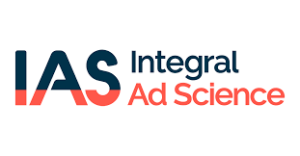“Sentiment analysis is one significant signal of many that can help inform activities like contextual targeting. What captures my attention with sentiment analysis is the underlying emotional classifications that IAS offers.”
[/vc_wp_text]
Hi Tony, please tell us about your journey in the technology space and how you started at IAS.
I started my career at a small data-driven consultancy in Sydney, Australia working across a number of industries, but I was always drawn to our technology projects. During the very early days of digital media, we advocated for topics including internet connectivity for mobile devices.
From there, I joined Nielsen Online and worked with a trailblazing team. Together we invented a new way of measuring the brand impact of digital advertising. Taking this product to market required frequent travel around the world. It was an exciting time and eventually this global exposure sparked a move to New York when I joined Yahoo in 2010. I was thrilled to be in the world’s largest advertising market and, better yet, Yahoo tasked me with building thought leadership programs to help digital marketers be more effective. Ultimately, I used this knowledge to head-up B2B marketing globally for Yahoo, and that’s where I first met Lisa Utzschneider, one of the most impressive leaders I have ever worked with and now CEO of Integral Ad Science where I serve as CMO.
Given my path, it’s probably no surprise that I am keenly interested in data, advertising, and digital media. Helping brands innovate to make deeper connections with their audiences is what drew me to IAS. Our solutions help forge meaningful bonds between brands, publishers, and consumers.
As a CMO of a tech company, how much has your role evolved in the COVID-19 era?
The pandemic has transformed our daily lives globally, and the same is true for our industry. While the challenges of coronavirus are serious and obviously stretch beyond the tech ecosystem, advertising and publishing professionals need guidance on how to navigate this new territory. Within days of COVID-19 being declared a global pandemic, our marketing team showed incredible agility by conducting and releasing the first research highlighting US consumers’ perceptions of ad adjacencies to coronavirus content. This research was so popular that we replicated it in several markets globally.
Tell us a bit about your remote workplace/pandemic management technology stack. How do these technology stacks help you stay on top of your game?
We call this ‘winning from home’. We learned to connect with our colleagues and partners in new ways and to lean into our strengths for delivering the best outcomes for our customers remotely. This proved that our new working norms could be an advantage by making small adjustments and remembering that we are all in this together. Practical steps like adjusting to communicating and coordinating projects via Slack, Asana, and video conferencing allowed us to accelerate our agile marketing approach. Understanding how we spend our time and empowering the team to create boundaries between their professional and personal lives have been critical. I’m impressed with the way our team has adapted, and I think that has emboldened many to step-up in new ways.
Your interaction with the CEO and other CMOs in the tech industry- what do they usually sound like? An impressive lesson you learned during these conversations?
I enjoy staying actively involved and building relationships with other leaders across the industry. Successful leaders are extremely dedicated to perpetual self-development and the development of their teams. When talking with someone who is world-class at what they do, they always ask questions and try to learn from you. Similarly, these leaders are always generous with sharing their experiences and perspectives. I encourage others to build strong networks of people they respect and trust because you can lean on and push each other forward.
Sentiment analysis has become a key technique to understand consumer preference. How do you analyze consumer behavior at IAS?
When it comes to brand safety, brand suitability, and contextual advertising, classifying content is critical. When you can classify specific attributes of content, advertisers can make better decisions about what will drive their campaign objectives and align with their brand values. This also helps publishers to better package their inventory. Sentiment analysis is one significant signal of many that can help inform activities like contextual targeting. What captures my attention with sentiment analysis is the underlying emotional classifications that IAS offers. For example, knowing if a piece of content is humorous or tragic in nature can inform the best messaging for your audience’s mindset in that moment. Sentiment analysis unleashes the potential of mindset-based marketing and helps marketers to tailor their ad messages.
Why do marketing organizations need a reliable CDP with Consumer Sentiment Analysis tool? How does IAS solve this gap between not having a CDP?
In a post-cookie world that is privacy-focused, marketers need alternate ways to connect with their audiences. Many leading marketers are leaning into contextual targeting as an effective way to connect with their audiences without relying on audience data. Marketers have always strived to deliver the right ad, to the right person, at the right time. IAS provides the contextual targeting technology that marketers need to achieve this.
What is the methodology behind your “Congruence Effect” report? What are the key findings from the report?
We surveyed over 1,000 U.S. internet users to understand how consumers feel about ads that appear alongside content with positive, negative, and neutral sentiment. More specifically, this research explores whether aligning ad messaging with the surrounding content impacts how consumers feel about the ads and associated brands.
This research shows that ad messaging which is aligned and congruent with its surrounding content drives improved brand perception, ad memorability, and ad receptivity. As the shift to contextual targeting continues, one critical takeaway from this research is that congruent messaging drove a 107% increase in brand favorability, even when the content sentiment was negative. This study demonstrates that the congruence of an ad message to its environment is a very important factor for campaign success.
Could you provide a detailed overview on the evolution of Adtech in 2021?
In addition to the shift to contextual, one major trend to watch in 2021 is the continued rise of ad-supported CTV. More eyeballs than ever before will turn to this burgeoning medium and we will see high rates of ad-supported CTV viewing, along with significant increases in ad investments. Almost nine-in-ten industry experts expect the shift in ad spend from linear TV to digital video/CTV to accelerate this year, according to our recent research.
We’ll also see an intensified focus on media quality when it comes to programmatic buying. 56% of survey respondents said programmatic is the environment most likely to experience brand risk incidents, so expect transparency in programmatic media quality to be a hot topic. Advertisers are also weighing transparency issues when it comes to their social budgets this year. Only 17% of industry experts believe social platforms provide enough transparency today around brand risk and viewability.
One startup segment/company you are most keenly following in 2021?
Outside of my day job, I advise an Australian-based start-up called Social Status in the social listening space. I’m impressed with what they have built to help marketers navigate a rapidly evolving social media landscape and the value they offer. Keep an eye on this team, they are going places.
Tag a person in the industry whose answers you would like to see here.
Greg MacDonald, VP, Marketplace Partnerships at Verizon Media
Thank you, Tony! That was fun and hope to see you back on MarTech Series soon.
Tony Marlow is a CMO at Integral Ad Science

Integral Ad Science is a global technology company that offers data and solutions to establish a safer, more effective advertising ecosystem. We partner with advertisers and publishers to protect their investments, capture consumer attention, and drive business impact.



